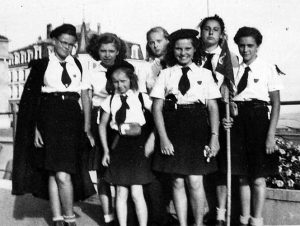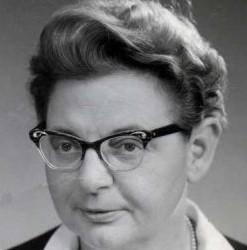The beginnings of the unionist girl guides
Girl scouting first appeared in England under the influence of the first groups of boy scouts created by Lord Baden-Powell (1857-1941), a retired general, in 1910.
As early as 1912, Christian Unions were already interested in the physical, spiritual and social development of young women, and thus promoted the creation of girl guides’ groups. Though the Christian Unions were protestant oriented, the unionist girl guides were soon to be opened to young women without religious education, and in 1920 even to Catholics and Jewesses. The FPE thus proved a pioneer in multi-religion dialogue. This, however, did not prevent the creation of the “Guides de France”, very similar to the FPE but ruled by the catholic hierarchy, in 1923.
After the patriot exaltation during WWI, girl and boy scouting promoted the notions of brotherhood opening to lower social classes new social initiatives.
Young women, traditionally confined to their future role of spouse and mother, also acquired a taste for outdoor activities, sports and living together.
The FPE was to expand dramatically in the early 1920s. In 1925 there were about 3,000 girl scouts, in 1940 there were 5,000 and more than 25,000, its peak, in 1960.
The structure and management of the movement
Such a dynamic and multifarious movement required a sturdy structure, diversified pedagogy and sound management.
The structure mimicked the English model with sub-groups of about ten girls, under the guidance of a certified girl guide. Several sub-groups formed a group, or troop or section led by one certified leader belonging to regional and national structures.
Girl scouts meet twice a month on average to perform outdoor activities, such as games, walks, singing in the evening around a bonfire. When they are indoors, their “quarters” were generally made available by the parish the troop belong to.
During summer camps and after a few months within the troop, guides make a “promise”, an important event for the community. It implies obeying the scout law, i.e. loyalty, purity, caring for others, volunteering to work, being in a good mood – such are the ideal goals of a young girl guide. To motivate and sustain these requirements, be they correct clothing or personal moral values, the founders of the movement displayed outstanding pedagogical qualities and natural authority.
Marguerite Walther (1882-1942), Violette Mouchon (1893-1985) but mainly Antoinette Butte (1898-1986) all of protestant bourgeois origin (except Antoinette Butte’s father who was a Catholic) used their faith and intellectual capacities to serve this ambitious undertaking called Fédération Française des Eclaireuses (FPE – French Federation of Girl Scouts).
Later on the managers of the movement were democratically appointed by promoting the formerly elected regional advisors, selected among basic leaders.
Thanks to the links between laity and Protestantism, the girl scouting movement became rather autonomous alongside Christian Unions, and parish life in general.
The attainments of girl scouting
Though scouting repelled some people because of its “military” aspects, such as the uniform, the need to meet military-like requirements…, it enabled to :
- strengthen the aptitudes, initiatives, definite needs for more freedom of young women who achieved a professional life thanks to their diplomas ;
- combine their wish to promote feminism with their deep respect for religious and moral tradition ;
- prove to protestant ladies that charities were not the only means to open up to other religions and social classes.
Scouting helped them along the road to modernity.







